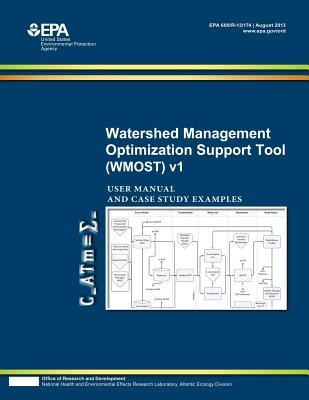
- We will send in 10–14 business days.
- Author: U S Environmental Protection Agency
- Publisher: CreateSpace Independent Publishing Platform
- Year: 2014
- Pages: 70
- ISBN-10: 1500605921
- ISBN-13: 9781500605926
- Format: 21.6 x 28 x 0.4 cm, softcover
- Language: English
- SAVE -10% with code: EXTRA
Watershed Management Optimization Support Tool (WMOST) v1 (e-book) (used book) | bookbook.eu
Reviews
Description
The Watershed Management Optimization Support Tool (WMOST) is intended to be used as a screening tool as part of an integrated watershed management process such as that described in EPA's watershed planning handbook (EPA 2008).1 The objective of WMOST is to serve as a public-domain, efficient, and user-friendly tool for local water resources managers and planners to screen a wide- range of potential water resources management options across their watershed or jurisdiction for cost- effectiveness as well as environmental and economic sustainability (Zoltay et al 2010). Examples of options that could be evaluated with the tool include projects related to stormwater, water supply, wastewater and water-related resources such as Low-Impact Development (LID) and land conservation. The tool is intended to aid in evaluating the environmental and economic costs, benefits, trade-offs and co-benefits of various management options. In addition, the tool is intended to facilitate the evaluation of low impact development (LID) and green infrastructure as alternative or complementary management options in projects proposed for State Revolving Funds (SRF). WMOST is a screening model that is spatially lumped with a daily or monthly time step. The model considers water flows but does not yet consider water quality. The optimization of management options is solved using linear programming. The target user group for WMOST consists of local water resources managers, including municipal water works superintendents and their consultants. This document includes a user guide and presentation of two case studies as examples of how to apply WMOST. Theoretical documentation is provided in a separate report (EPA/600/R-13/151).
EXTRA 10 % discount with code: EXTRA
The promotion ends in 15d.16:50:29
The discount code is valid when purchasing from 10 €. Discounts do not stack.
- Author: U S Environmental Protection Agency
- Publisher: CreateSpace Independent Publishing Platform
- Year: 2014
- Pages: 70
- ISBN-10: 1500605921
- ISBN-13: 9781500605926
- Format: 21.6 x 28 x 0.4 cm, softcover
- Language: English English
The Watershed Management Optimization Support Tool (WMOST) is intended to be used as a screening tool as part of an integrated watershed management process such as that described in EPA's watershed planning handbook (EPA 2008).1 The objective of WMOST is to serve as a public-domain, efficient, and user-friendly tool for local water resources managers and planners to screen a wide- range of potential water resources management options across their watershed or jurisdiction for cost- effectiveness as well as environmental and economic sustainability (Zoltay et al 2010). Examples of options that could be evaluated with the tool include projects related to stormwater, water supply, wastewater and water-related resources such as Low-Impact Development (LID) and land conservation. The tool is intended to aid in evaluating the environmental and economic costs, benefits, trade-offs and co-benefits of various management options. In addition, the tool is intended to facilitate the evaluation of low impact development (LID) and green infrastructure as alternative or complementary management options in projects proposed for State Revolving Funds (SRF). WMOST is a screening model that is spatially lumped with a daily or monthly time step. The model considers water flows but does not yet consider water quality. The optimization of management options is solved using linear programming. The target user group for WMOST consists of local water resources managers, including municipal water works superintendents and their consultants. This document includes a user guide and presentation of two case studies as examples of how to apply WMOST. Theoretical documentation is provided in a separate report (EPA/600/R-13/151).


Reviews